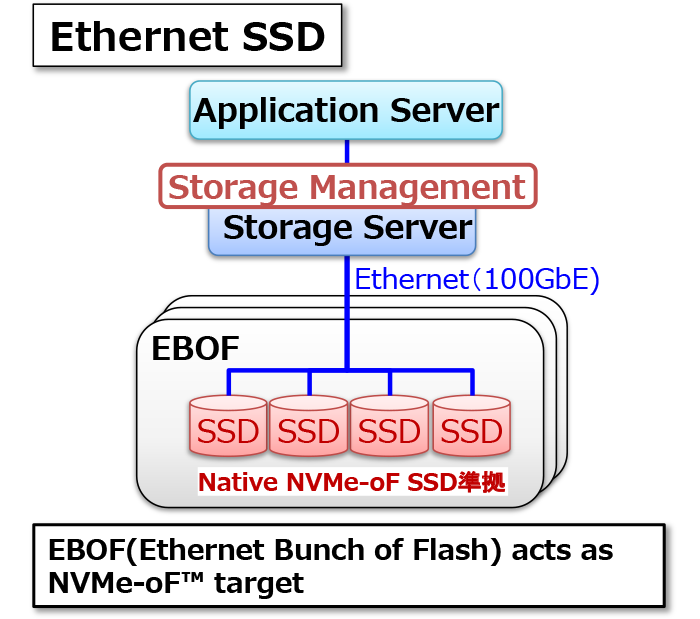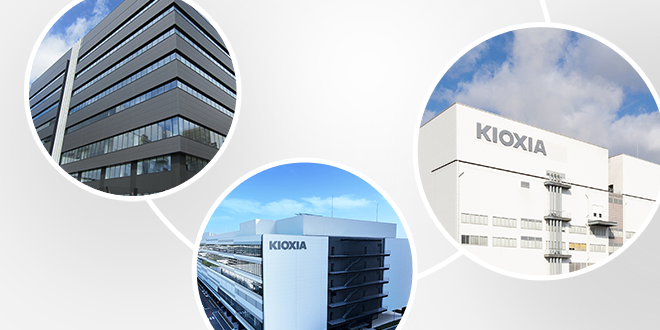Please select your location and preferred language where available.
The demand of storage capacity has been increasing due to the dramatic increase of data volume in processing big data and applications such as SNS. Data center systems can provide high-capacity network storage by connecting multiple storage systems to the network, and can increase capacity at a relatively low cost by adding more storage devices. Usually networked storage is implemented on storage servers with multiple SSDs. However, now it becomes true that storage servers cannot fully utilize the high-speed performance and low latency of NVMe SSDs due to the bottleneck of computing power and limited network bandwidth. To solve this problem, Kioxia is developing SSD that connects directly to the network and enables high-speed, low-latency access (Ethernet SSD). The Ethernet SSDs being developed supports NVMe-oF™*1 protocol and ratified by standard body as Native NVMe-oF SSD. This standard supports RDMA*2 technology in a highly reliable network environment and it can achieve a comparable performance to direct attached SSD with around 20μsec in latency.
As such, Ethernet SSDs can be populated into enclosure as figure below, it enables network storage cheaper and easy to use, and provide high-speed access that previously required proprietary technology and specialized knowledge.

Ethernet SSDs in the figure natively support NVMe-oF and can be directly connected to a 100GbE high speed network between application server and storage server. By connecting EBOF*3 in daisy- chain, it is possible to construct high-speed, low-latency and inexpensive network storage, and it contributes to reduce the TCO*4 of the data center.
- NVMe-oF (NVM Express™ over Fabric): A communication protocol that extends NVMe (Non-Volatile Memory Express) standard as network storage. NVMe™ and NVMe-oF™ are trademarks of NVM Express, Inc. Other company names, product names, and service names may be trademarks of their respective companies.
- RDMA (Remote Direct Memory Access): A method to directly transfer data without going through the CPU.
- EBOF (Ethernet Bunch Of Flash): One of the implementations of a flash array.
- TCO: Total Cost of Ownership: The expenditure actually costs to own a whole computer system.

